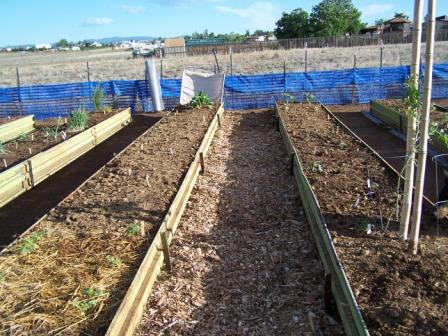We get a lot of questions on how to save seeds. Most of them are general seed saving questions, but most boil down to how to save seeds for the next year. Most of the seed packets have more seeds than will be used in one year, and most seeds are good for several years in proper storage conditions.
Please realize that seeds are meant to be planted, not stored!
We get a chuckle from the e-bay seed sellers and survivalist stores that proclaim their seeds are nitrogen flushed, vacuum packed in tin cans or aluminum foil pouches, and are good for 5 or 10 years.
That’s great, but if the seeds are tossed out in the unheated/uncooled garage for 3+ years- guess what?
They’re DEAD!
The temperature/humidity fluctuations shortens the life of the stored seeds drastically. Seeds are the plant’s mechanism for propagation and survival. They have evolved to survive for a short time- e.g. a winter or two- in the ground until the optimum conditions arrive to sprout.
For almost all domesticated varieties that are used for food, the optimum conditions mean next spring. There definitely are seeds that will last longer, but most are non-food plants. Throughout history people would collect and save seeds for the next year or two and have kept plant varieties alive for thousands of years.
Today we have methods to stabilize temperature and humidity; we have advantages in prolonging the life of the stored seed.
The best way to save seeds for future plantings are to keep the seeds in the original seed packets; that way you know where they came from, the name, planting instructions, etc. Then put them in clear Ziplock sandwich baggies with the date on the baggie.
This way you know when you started storing them.
Put all of the baggies in a gallon Ziplock and put it into the freezer.
“But won’t that hurt the seeds?”, people ask. Not at all!
This is why the Vavilov Institute in St. Petersburg, Russia uses liquid nitrogen to freeze seeds for a long time. This is also why the “Doomsday Vault” in Svalbard, Norway is located above the Arctic Circle and dug into the side of a mountain and several hundred feet down, to keep the vault below zero if the cooling system fails.
Your freezer is cold and has low humidity. You probably don’t go into the freezer several times a day like the refrigerator. Each time you open/shut the door, the outside air comes in, raising the temperature and humidity.
This isn’t good for your seeds if they are in the fridge. The freezer is more stable. Please understand the fridge is better than the garage or basement, but the freezer is even better, and you probably have space!
When time comes for planting next spring, take out the packets you will use, take out the seeds you will plant if there are a lot left, and put the bag back into the Ziplock and into the freezer. Let the seed to be planted come to room temperature before planting into the soil.
Most varieties will keep for 3+ years with no loss of germination.
There are exceptions, of course. Onion seeds are good for 1 year, no more, no matter the method of keeping. Garlic only grows from the bulb or clove, freezing kills it.
There are some other varieties that have a short life in storage, but don’t get too caught up in that. If you plant each year, you will be fine.
When you start to save your own seed, the same procedure applies- just be sure the seed is DRY, or else the freeze will expand any moisture in the seed and destroy it.
Label the bag with the name, date harvested, date stored and freeze it.
If you get into seed saving, or want a lot more information on the methods and details for each variety of vegetable, Seed to Seed by Suzanne Ashworth is a wonderful book. It is not light reading, but if treated like a reference book or text book, you’ll do just fine.



